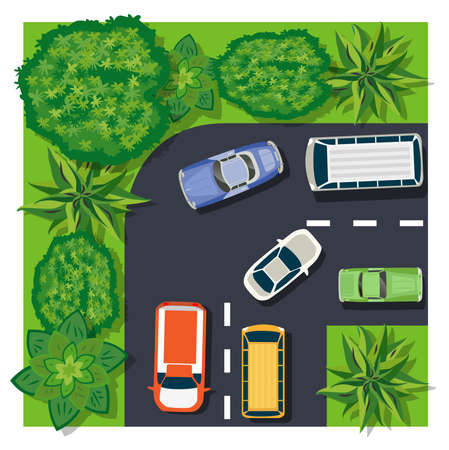1. Introduction: Understanding UK Driving Patterns
Across the United Kingdom, driving habits and environments vary dramatically between urban and rural settings. City dwellers navigate dense traffic, frequent stop-start journeys, and short commutes, while those in the countryside experience longer trips at steady speeds along scenic but less congested roads. These distinct patterns not only shape daily life but also have a significant impact on car maintenance—particularly when it comes to battery lifespan. Before diving into how these differences play out under the bonnet, its vital to understand what sets urban and rural driving apart in the UK context and why these factors are so crucial to keeping your vehicle in top condition.
2. Typical Urban Driving Behaviour in the UK
Urban driving in the UK is defined by dense city layouts, frequent stop-start traffic, and relatively short travel distances. British city commuters typically navigate through congested roads, with journey lengths often under 10 miles per trip. These patterns distinctly impact battery health and charging routines for electric vehicle (EV) owners.
City Commutes: Short and Frequent Journeys
Urban drivers in cities like London, Manchester, or Birmingham rarely undertake long-distance drives on a daily basis. Instead, they face repeated short trips—often involving numerous stops for traffic lights, pedestrian crossings, and roundabouts. This constant acceleration and deceleration increase the number of charge-discharge cycles an EV battery endures, potentially accelerating battery wear.
Stop-Start Traffic and Battery Impact
The prevalence of stop-start traffic due to congestion has a double-edged effect. On one hand, regenerative braking systems commonly found in modern EVs help recover some energy during frequent stops. However, this benefit is partly offset by the increased cycling of the battery, as continuous stopping and starting draws more frequent but smaller amounts of power compared to steady cruising.
Average Urban Journey Data
| Factor | Urban Environment |
|---|---|
| Average Journey Length | 6–10 miles |
| Number of Daily Trips | 3–6 |
| Typical Speed Range | 15–25 mph |
| Time Spent Idling/Stopped | Up to 30% |
| Main Charging Pattern | Frequent top-ups at home or public chargers |
Charging Routines for Urban Drivers
Due to the nature of urban journeys, EV owners in UK cities tend to favour regular “top-up” charging rather than deep discharges followed by full charges. This approach can help extend battery lifespan but may also mask underlying degradation until capacity loss becomes more significant. Access to home or workplace charging is more common in urban settings, supporting these frequent but shorter charging sessions.

3. Rural Routes: Distinctive Features and Challenges
When it comes to rural driving in the UK, motorists encounter a set of unique conditions that set these journeys apart from urban commutes. The typical rural drive often involves longer distances between destinations, higher average speeds on A-roads and country lanes, and far fewer stops due to lighter traffic and minimal congestion. While this might sound idyllic, these factors have tangible effects on vehicle battery lifespan—especially for electric vehicles (EVs) and hybrids.
Longer Journeys and Battery Drain
Unlike city trips characterised by frequent stop-starts, rural drives usually mean sustained periods of motion. Extended mileage at moderate to high speeds can result in consistent power demand from the battery pack. For EV owners, this translates into deeper discharge cycles per journey, which over time can accelerate battery degradation compared to the gentler cycling seen in short urban commutes.
The Impact of Higher Speeds
Speed limits outside urban areas are typically higher, with many rural roads permitting up to 60 mph (and dual carriageways even more). Maintaining these speeds increases energy consumption due to greater aerodynamic resistance and less opportunity for regenerative braking—a key feature in EVs that helps recoup energy during deceleration. The reduced use of regenerative braking in rural settings means batteries work harder, potentially shortening their effective lifespan.
Charging Infrastructure: Accessibility Matters
One of the main challenges faced by rural drivers is the relative scarcity of public charging points. While urban centres and motorways are seeing rapid expansion of charging networks, many countryside regions lag behind. This limited access may force drivers to rely more heavily on home charging or plan routes meticulously around available infrastructure, leading to range anxiety and a tendency to maximise charge cycles—both factors that can influence long-term battery health.
In summary, while rural driving offers a smoother and less interrupted driving experience, it presents distinct challenges for modern batteries—especially as the UK transitions towards electrified transport. Understanding how these patterns impact battery longevity is essential for anyone regularly venturing beyond the city limits.
4. Battery Lifespan: The Science Behind Urban and Rural Usage
Understanding how UK driving patterns impact electric vehicle (EV) battery lifespan requires a closer look at several technical factors. Your day-to-day routine—be it city commutes through London or extended drives across the Yorkshire Dales—directly affects critical battery metrics such as depth of discharge, charge cycles, and temperature exposure.
Depth of Discharge (DoD): Urban vs. Rural Realities
In urban environments, frequent stop-start traffic and shorter journeys typically result in a shallow depth of discharge. This means you’re only using a small percentage of your battery’s total capacity before recharging. In contrast, rural drivers often experience longer distances between charges, leading to a deeper DoD per trip. Since lithium-ion batteries degrade faster with higher DoD, city drivers may enjoy slightly better battery longevity, provided they avoid constant rapid charging.
Charge Cycles: More Starts Mean More Cycles
A charge cycle is defined as one complete discharge and recharge of the battery. Urban drivers tend to accumulate more charge cycles due to regular top-ups at home or public chargers after short trips. Meanwhile, rural drivers might cover more miles per cycle but recharge less frequently. Both approaches can be balanced for optimal battery health by following manufacturer guidance on charging habits.
Comparing Urban and Rural Impact on Battery Parameters
| Factor | Urban Driving | Rural Driving |
|---|---|---|
| Depth of Discharge | Low (Frequent, Short Trips) | High (Longer Journeys) |
| Number of Charge Cycles | High (More Frequent Charging) | Lower (Less Frequent Charging) |
| Temperature Exposure | Generally Stable (Urban Heat Island Effect) | Variable (Potential for Colder or Hotter Extremes) |
| Regenerative Braking Benefit | High (Stop-Start Traffic) | Lower (Steady Speeds) |
The Role of Temperature in the UK Context
Batteries perform best within a moderate temperature range. Urban centres like Birmingham or Manchester benefit from the urban heat island effect, which can keep temperatures milder during winter months, helping maintain optimum battery conditions. Conversely, rural areas may see greater temperature swings—cold snaps in Scotland or heatwaves in Cornwall—which can stress the battery’s thermal management system.
The interplay between these factors means that neither urban nor rural driving is universally “better” for EV batteries in the UK; rather, understanding your typical driving environment allows you to tailor your charging and usage habits for maximum battery longevity.
5. Cost Implications: What UK Drivers Need to Consider
When weighing up the financial aspects of battery lifespan across urban and rural settings in the UK, drivers must look beyond the initial purchase price and factor in ongoing maintenance and replacement costs. Performance analysis reveals that driving patterns directly impact these expenses, with distinct regional nuances.
Urban Driving: Short Journeys, High Wear
In city environments like London or Manchester, frequent stop-start traffic, short commutes, and regular use of electrical systems (lights, heaters, infotainment) place a higher strain on batteries. While modern vehicles often feature start-stop technology designed for efficiency, the reality is increased cycling leads to faster degradation. Consequently, urban motorists may find themselves budgeting for more frequent battery replacements—potentially every 3-4 years—compared to their rural counterparts.
Hidden Costs to Watch For
Short trips also mean batteries rarely reach full charge from alternator input, leading to sulphation—a key cause of premature failure. The cost isn’t just in replacement; breakdown services and emergency call-outs can add up quickly. For those using plug-in hybrids or electric vehicles in cities, public charging fees and the potential premium for rapid-charging infrastructure are additional considerations.
Rural Driving: Longer Runs, Lower Frequency
On the other hand, rural drivers—think residents of Cumbria or Northumberland—benefit from longer journeys at consistent speeds, allowing batteries to charge fully and discharge less aggressively. This extends battery life and reduces the frequency of replacements. However, rural areas can present their own challenges: colder weather may require higher use of heating systems in winter months, and limited access to garages could mean higher call-out charges if a battery does fail unexpectedly.
Comparative Cost Analysis
Over a typical five-year ownership period, urban drivers might expect to spend 30–50% more on battery-related costs than their rural peers. Factoring in labour rates—which vary by region—and the convenience premium attached to city-centre garages, the total bill can be substantial. Conversely, rural drivers benefit from less frequent replacements but should budget for potential travel or towing costs due to distance from service centres.
Smart Budgeting Tips for UK Motorists
For all drivers, regular battery health checks (often offered as part of MOTs), investing in quality batteries suited for local driving conditions, and considering extended warranties can mitigate unexpected costs. City dwellers may also want to consider home charging solutions for EVs to avoid public charger premiums. Ultimately, understanding how your driving style impacts performance-related expenses will help you make informed decisions—and avoid unpleasant surprises—wherever you drive in the UK.
6. Recommendations: Maximising Battery Health for Your Driving Style
Practical Tips for Urban Drivers
If you predominantly drive in UK cities, your EV battery faces frequent stop-start traffic, short journeys, and limited opportunities for high-speed charging. To maximise battery lifespan:
- Avoid frequent rapid charging: While ultra-fast chargers are convenient, relying on them regularly can accelerate battery degradation. Use slower home or workplace charging whenever possible.
- Limit deep discharges: Try not to let your battery drop below 20% before recharging and avoid topping up to 100% unless necessary for a long trip.
- Use eco-driving modes: Most modern EVs feature eco or city driving modes which optimise power delivery and regenerative braking, reducing battery stress.
Best Practices for Rural Motorists
If your journeys often take you through the British countryside with longer distances and higher average speeds, consider these strategies:
- Plan charge stops strategically: Take advantage of rural rapid charging stations but balance with overnight slow charging at home to reduce battery strain.
- Pre-condition your car: On chilly mornings, use pre-conditioning while plugged in to warm up the cabin and battery, improving efficiency and longevity.
- Monitor tyre pressure: Lower rolling resistance from properly inflated tyres is especially important on rural roads and can reduce unnecessary load on the battery.
General Battery Care for All UK Drivers
- Avoid extreme temperatures: Whenever possible, park in shaded areas during summer or use a garage in winter to minimise thermal stress on the battery.
- Keep software updated: Manufacturers frequently release updates that improve battery management systems—ensure your car is running the latest version.
Buying Advice: Choosing the Right EV for Your Driving Pattern
If you’re shopping for an electric vehicle, match your choice to your primary driving environment. Urban drivers may prioritise compact models with efficient regenerative braking systems and modest range requirements. Rural motorists might look for larger batteries, robust thermal management systems, and longer real-world range capabilities. Always check manufacturer guidance on recommended charging practices and warranty coverage for peace of mind.
The Bottom Line
No matter where you drive in the UK, thoughtful charging habits and routine maintenance will go a long way towards preserving your EV’s battery health—saving you money and ensuring reliable performance mile after mile.


